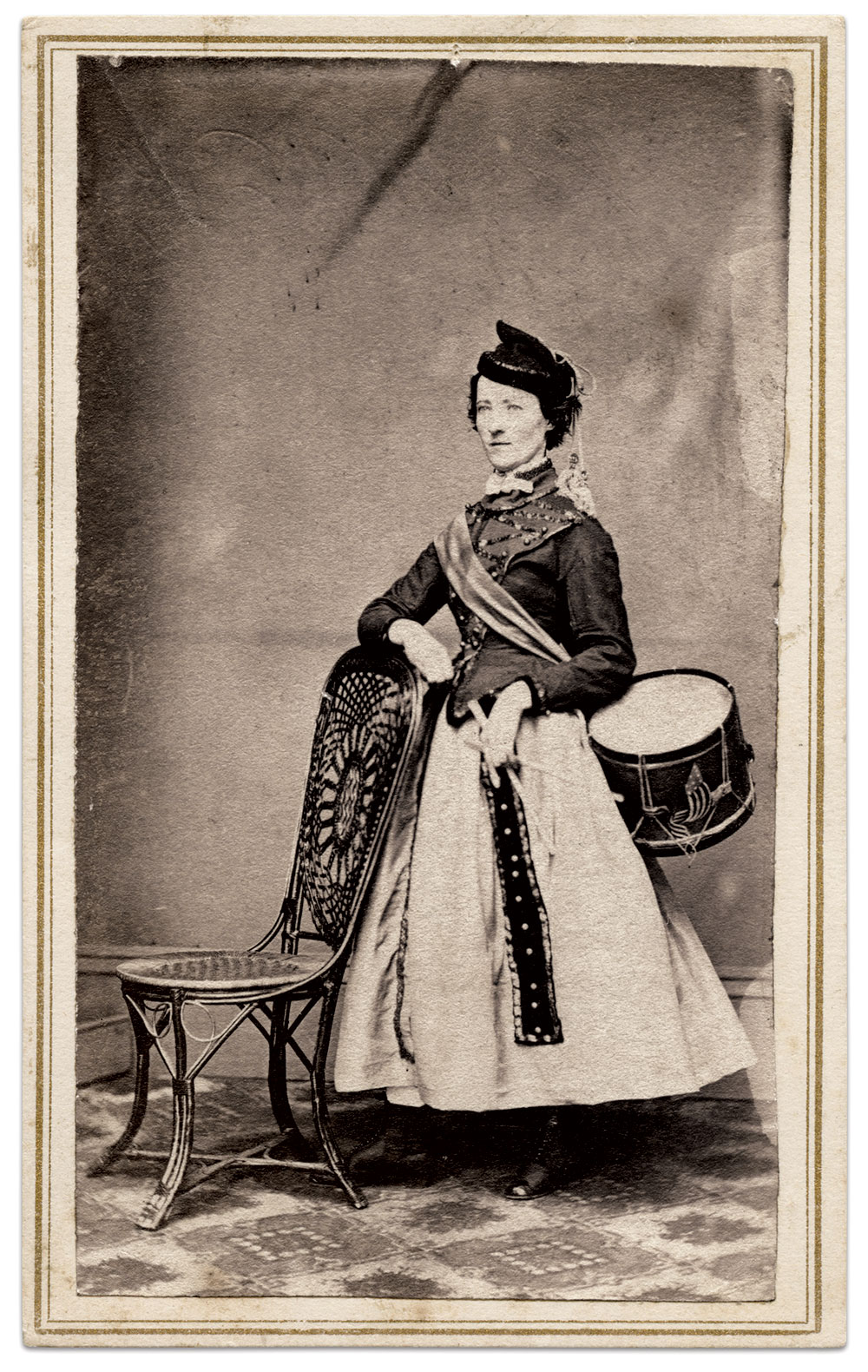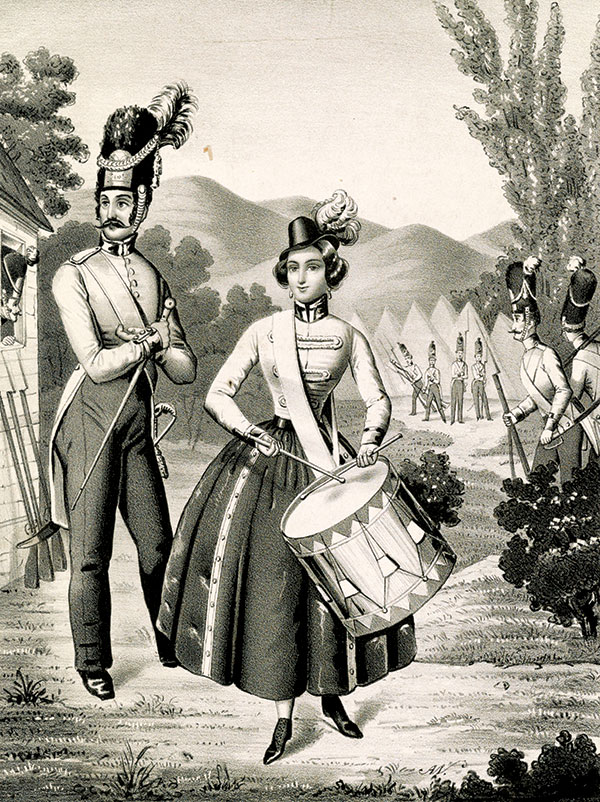The outbreak of war in 1861 brought an unprecedented mobilization of volunteers for military service. In population centers across the divided nation, civic leaders organized regiments composed of able-bodied patriotic men.
Women supported their local regiments. The vast majority of them contributed time, expertise and money to philanthropic organizations. Some became more directly involved as paid or volunteer nurses or relief workers. Another group of women followed a less conventional path when they accompanied husbands, sons and brothers in hometown regiments off to war. Whether known as vivandières, mothers of the regiment, daughters of the regiment, or simply by their own names, these freelancers occupied unofficial roles on the regimental level.


The length of their association with a chosen regiment varied. Some never left their hometown or returned soon after they departed, while others toughed it out to the end.
The individual pictured here, her name lost in time, represents the spirit of this unique group. Her youth and appearance suggest two options. She may have either been adopted as a Daughter of the Regiment, or she may have acted the part in a play or fundraiser for the troops.
Ladies involved with armies is as old as war itself. American women did so during the Revolution of 1776. During the 19th century, French culture fascinated Americans. In 1840, a performance of the comic opera “La Fille du Régiment” entertained French theater-goers. It traveled across the Atlantic and became popular with American audiences. In the 1850s, Europe’s Crimean War raised awareness of women in military-adjacent roles, notably nurse Florence Nightingale and a cadre of vivandières.
When the Civil War began, women embraced these and other roles with patriotism equal to their male counterparts. Based on an analysis of press reports in newspapers during the first two years of the war, men enthusiastically embraced the idea of “Daughters of the Regiment.” There were skeptics, however. One of them, writing under the pseudonym “Bang,” asked a rhetorical question in the April 23, 1861, edition of the Cincinnati Enquirer, “In these times when it seems that it is almost necessary for the soldiers to have a ‘Daughter of the Regiment’ do they need to have a ‘Son of a Gun?’ I am anxious to know.”
It may be fairly stated that Daughters of the Regiment were important to the wartime culture.
SPREAD THE WORD: We encourage you to share this story on social media and elsewhere to educate and raise awareness. If you wish to use any image on this page for another purpose, please request permission.
LEARN MORE about Military Images, America’s only magazine dedicated to showcasing, interpreting and preserving Civil War portrait photography.
VISIT OUR STORE to subscribe, renew a subscription, and more.

